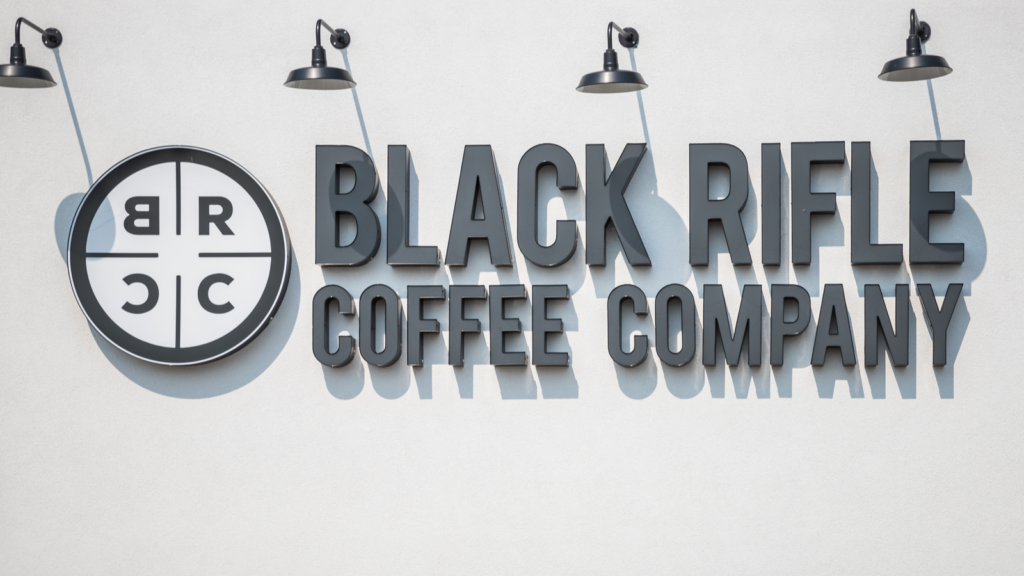Should investors be concerned about the slide in Black Rifle Coffee Company’s (NYSE: BRCC) stocks?
Following the public outcry in February of this year against the merger company (SPAC), the BRCC stock increased by 242% to a peak of $ 34 per share. But since its inception on April 8, Black Rifle stock has dropped 34% and is now trading at $ 14.60 per share and reaching a pre-IPO price of $ 10.
The astonishing rise and fall has undoubtedly left shareholders wondering if the Black Rifle’s wealth is like a wide stock market or a sign of problems within the Salt Lake City, Utah coffee company?
Brand Identity
The BRCC stock decline is due to a number of factors. One of them is that the company has some difficulty with its ownership. The company was founded by military veterans and has close ties to the US military and the Conservative right in the U.S.
When rival Starbucks (NASDAQ: SBUX) announced it would employ 10,000 refugees, Black Rifle Coffee responded by recruiting and employing 10,000 military veterans. Black Rifle Coffee also made several financial contributions to veterans and leading organizations over the years.
Although its affiliation with the right wing has worked for the company over the years, the San Antonio, Texas-based organization has faced a setback after it appeared to be backing down from extremist views. Critics have accused the coffee company of “awakening” after it criticized extremes in several media outlets, including an article in the New York Times.
The company’s chief executive, Evan Hafer, known online for his lively and relaxed nature, expressed frustration with the way Black Rifle Coffee was politically motivated, saying, “These are people who talk nonsense and nonsense. about a misleading company. ”
Other Problems
Aside from the fact that Black Rifle Coffee is criticized right and left politically, the company has other problems facing it. The parent company of Black Rifle, BRC Inc., reported its first financial results as a public entity in March, and the results were very small.
# 1 HOW TO INVEST $ 500 NOW
Revenue for the fourth quarter of 2021 increased by 20% to $ 71.8 million from $ 59.9 million last year. But Black Rifle Coffee recorded a loss of $ 4.6 million compared to $ 976,000 in revenue last year. Those gains have contributed to the volatility and a sharp decline in BRCC stocks over the past few months.
Another interesting feature of Black Rifle Coffee, as well as the potential problem, is the company’s business model. To date, Black Rifle has deviated from the traditional retail network of coffee shops used by rivals such as Starbucks and Dunkin ’Donuts to harvest a customer-specific coffee subscription service.
More than 100,000 subscribers pay a monthly fee for Black Rifle coffee to be delivered to their home or office. To date, Black Rifle Coffee has only 16 coffee shops, including one in neighboring Canada. However, the company has announced plans to add between 15 and 20 new stores this year. Some analysts have asked how much BRC can grow without a strong trading network.
Bottom Line
Although the decline in Black Rifle stock is disappointing, it is important for investors to remember that it is the earliest days of Black Rifle Coffee life as a public company. It takes time for the Black Rifle Coffee Company to develop and implement its growth strategy and demonstrate reliable profits and consistent benefits.
Concerns about coffee may need to be spent on a few dollars in public relations to help improve its image between both its core and its regular customers. That being said, with weak profits, declining share prices, and the social downturn surrounding the company, the BRCC stock is not buying.
At the time of publication, Joel Baglole did not have (directly or indirectly) any of the securities mentioned in this article. The views expressed in this article are those of the author, under the https://sportpokers.com/Publishing Guidelines.
Joel Baglole has been a business journalist for 20 years. He has spent five years as a staff journalist for the Wall Street Journal, and has written for the Washington Post and Toronto Star, as well as for financial websites such as Motley Fool and Investopedia.






More Stories
PossiblyEthereal: Everything you Need to Know
What is ROC in the Olympics? Here’s the reason Team Russia is contending under that title in Beijing
AMC Marvel Road Short Pressure May Occur